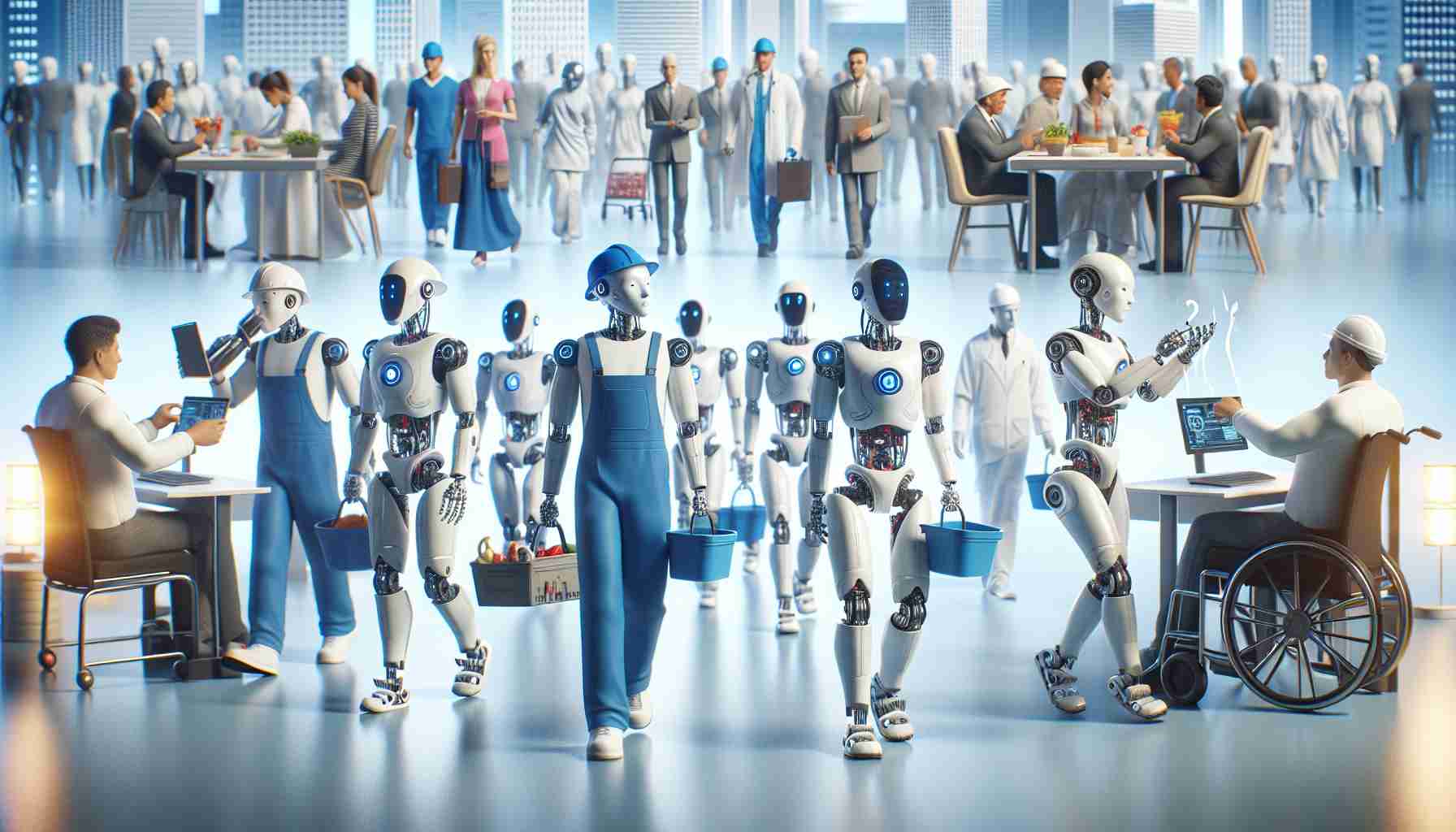- Elon Musk unveiled Optimus, an advanced humanoid robot prototype at Tesla AI Day.
- Designed for mass production at a low cost, Optimus aims to perform tasks typically managed by humans, like carrying heavy loads and complex assembly tasks.
- Optimus utilizes Tesla’s state-of-the-art AI technology, potentially revolutionizing industries by automating repetitive and hazardous tasks.
- The introduction of such robots raises both hopes for increased efficiency and concerns over job displacement and ethical considerations.
- Questions about regulatory approvals and the ethical use of robots in diverse sectors must be addressed.
- Optimus represents a potential shift towards a future where robots and humans work alongside each other, highlighting the importance of responsible technological integration.
Elon Musk is no stranger to pushing the boundaries of technology, and his latest venture into the world of robotics is no exception. At the recent Tesla AI Day, Musk introduced the world to the prototype of an advanced humanoid robot named Optimus. Designed to perform tasks typically handled by humans, these robots could revolutionize industries across the globe.
What sets Optimus apart? Unlike previous robotic attempts often limited by high cost and functionality, Optimus is engineered for mass production at an affordable price. Built using Tesla’s cutting-edge AI technology, the robot is expected to perform tasks like carrying heavy loads, moving objects, and even handling complex tasks such as assembling parts on a production line.
The implications for industries are monumental. With the capability to replace human labor in repetitive and dangerous tasks, Optimus presents a new chapter in automation. Economists and tech enthusiasts are debating whether this could lead to increased efficiency and economic growth or rise concerns over job displacement and societal impacts.
But are we ready? While Optimus promises to alleviate workforce shortages and improve safety, ethical and logistical challenges need addressing. Questions surrounding regulatory approvals, ethical use in various industries, and the potential for widespread job losses are paramount.
As Elon Musk and Tesla continue to innovate, Optimus offers a glimpse into a future where humans and robots coexist in the workforce. Still, the challenge lies in integrating these technologies responsibly, ensuring that society reaps the benefits without compromising the human element.
Unlocking the Future: How Tesla’s Humanoid Robot, Optimus, Could Shape Tomorrow’s Workforce
The Revolutionary Features of Tesla’s Optimus Robot
Elon Musk’s latest robotics endeavor, Optimus, introduced at Tesla AI Day, seeks to redefine how we perceive automation and robotic efficiency. What makes Optimus particularly compelling is its promise to deliver advanced capabilities at an accessible price point—a significant departure from the traditionally expensive and limited-function industrial robots.
Features and Specifications:
– Mass Production Design: Optimus is crafted for scalability, using Tesla’s expertise in mass production, aiming to make advanced robotics available for everyday applications.
– AI Integration: Powered by Tesla’s sophisticated artificial intelligence, Optimus can manage both simple and intricate tasks, from moving objects to potentially assembling products in manufacturing environments.
– Human-like Dexterity: The robot is designed to replicate human movement, offering flexibility in environments traditionally reliant on human labor.
Potential Pros and Cons of Optimus in Industry
Pros:
– Increased Productivity: The introduction of robots like Optimus could significantly boost productivity, especially in sectors where manual labor dominates.
– Enhanced Safety: By taking over hazardous tasks, Optimus could considerably reduce workplace injuries, promoting a safer working environment.
– Economic Growth: In the long term, widespread adoption of such technologies might lead to innovations that could stimulate economic expansion.
Cons:
– Job Displacement: Automating tasks may lead to considerable job disruptions, raising questions about the future of work and income distribution.
– Ethical Concerns: The integration of humanoid robots into daily life presents ethical challenges, particularly regarding privacy and consent in utilizing such technology.
The Market Forecast and Trends
Predictions: As automation technologies advance, the demand for affordable and intelligent humanoid robots like Optimus is expected to grow significantly over the next decade. By 2030, the global robotics market is projected to exceed $100 billion, with automation in sectors like manufacturing, healthcare, and logistics driving much of the growth.
Trends: The push for sustainability is a critical factor in robotics innovation, as companies seek environmentally friendly solutions that maintain productivity while minimizing carbon footprints.
Key Questions and Answers
1. What industries stand to benefit the most from the deployment of Optimus?
Optimus is poised to have the most profound impact on manufacturing, logistics, and healthcare industries. In manufacturing, it can enhance production speeds and precision. In logistics, robots could handle leveraging tasks, thereby improving efficiency. Healthcare may benefit from automation in terms of patient care and administrative duties.
2. How is Tesla addressing the potential job displacement issue associated with Optimus?
Elon Musk has suggested that as jobs become automated, there might be a shift toward jobs that focus more on technology management and less on manual tasks. Tesla is exploring ways to reskill the workforce, allowing current employees to transition into roles dealing with robotic oversight and maintenance.
3. What safety and ethical standards are being considered for using robots like Optimus?
Tesla is working on establishing a set of regulatory guidelines to ensure Optimus operates safely in various environments. Ethical considerations include ensuring robots do not infringe on personal privacy and are used in compliance with national labor laws. Tesla aims to engage in dialogues with industry regulators to create a framework that governs the responsible use of robotics.
For more information on Tesla’s innovations and corporate philosophy, visit the official Tesla website.













